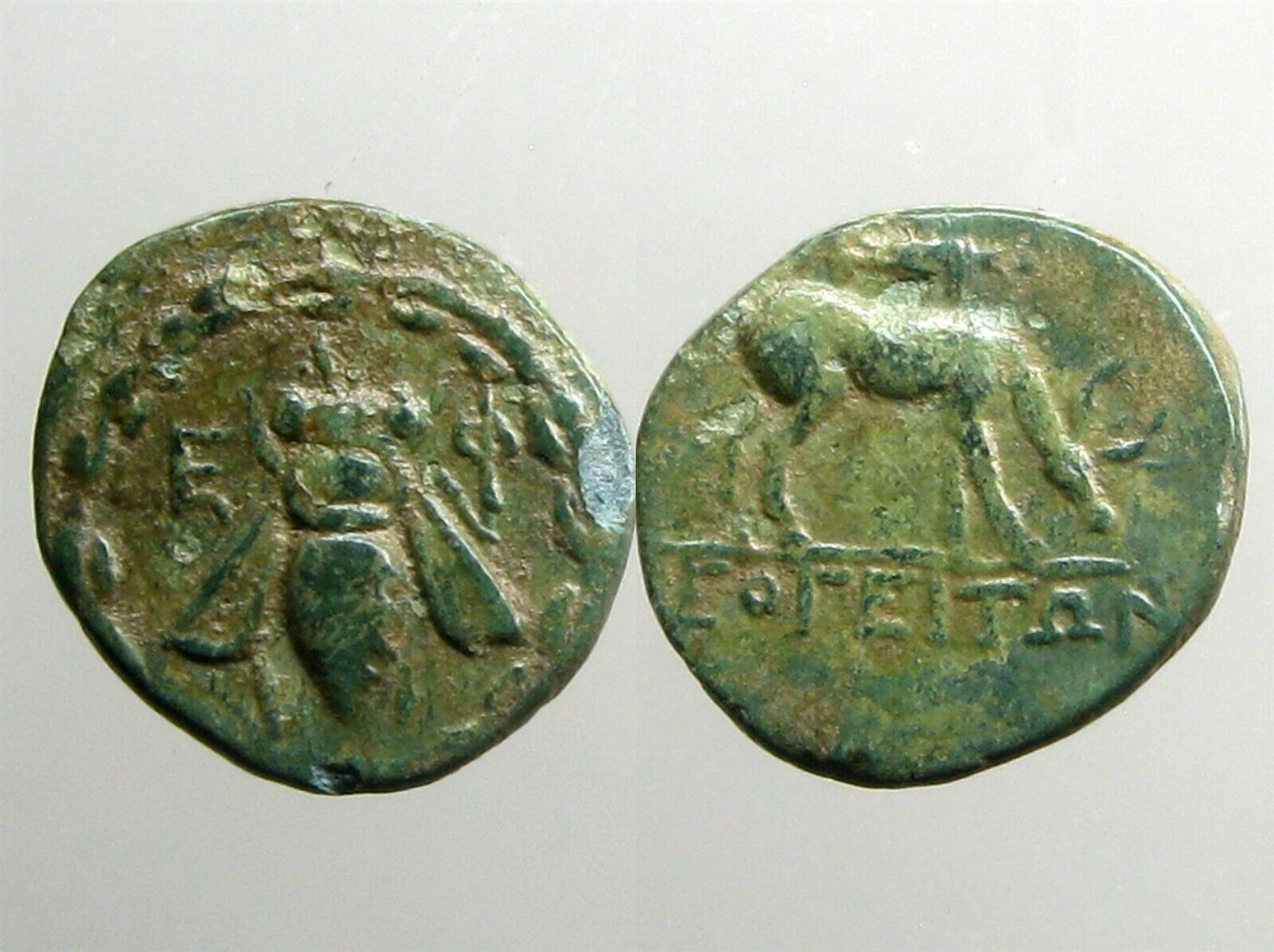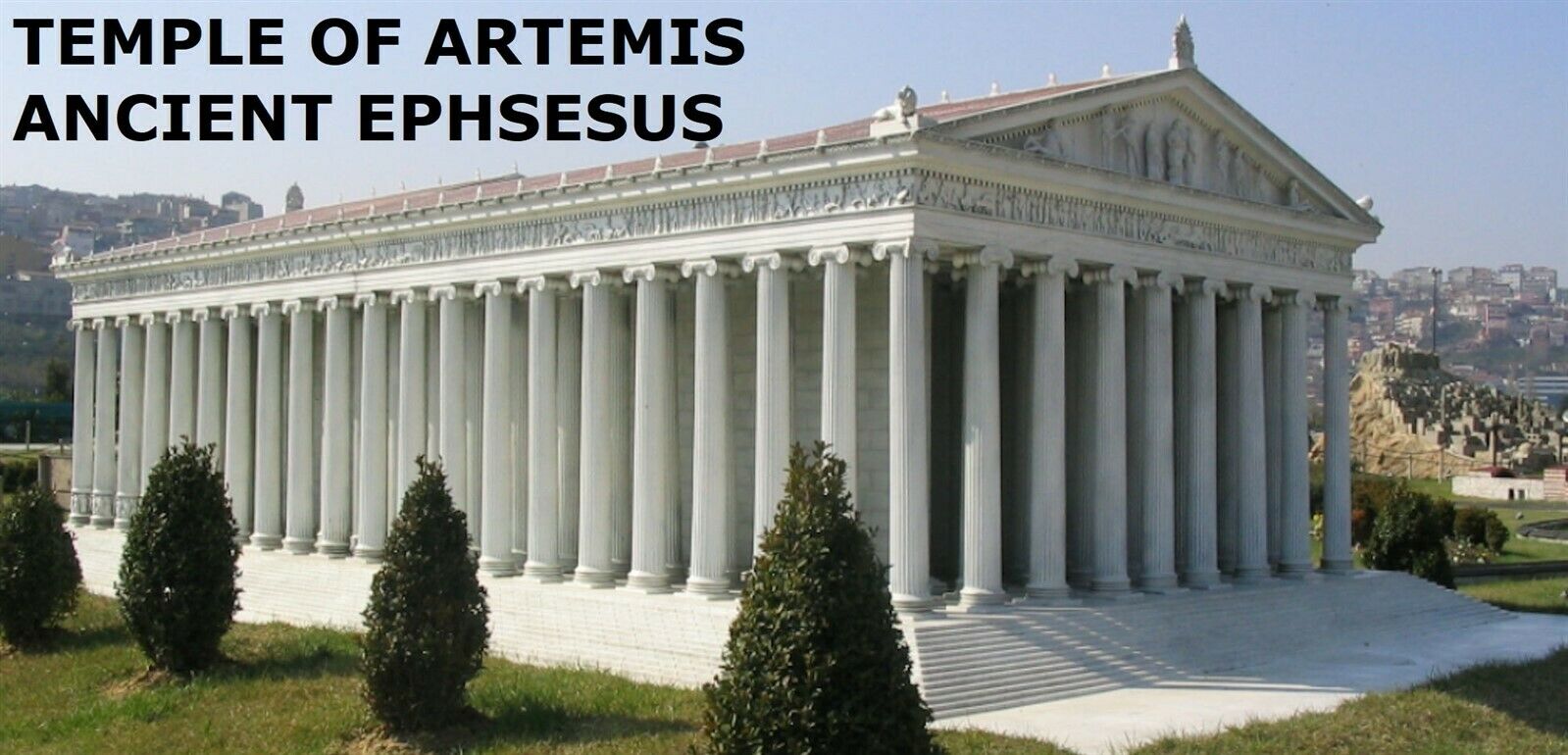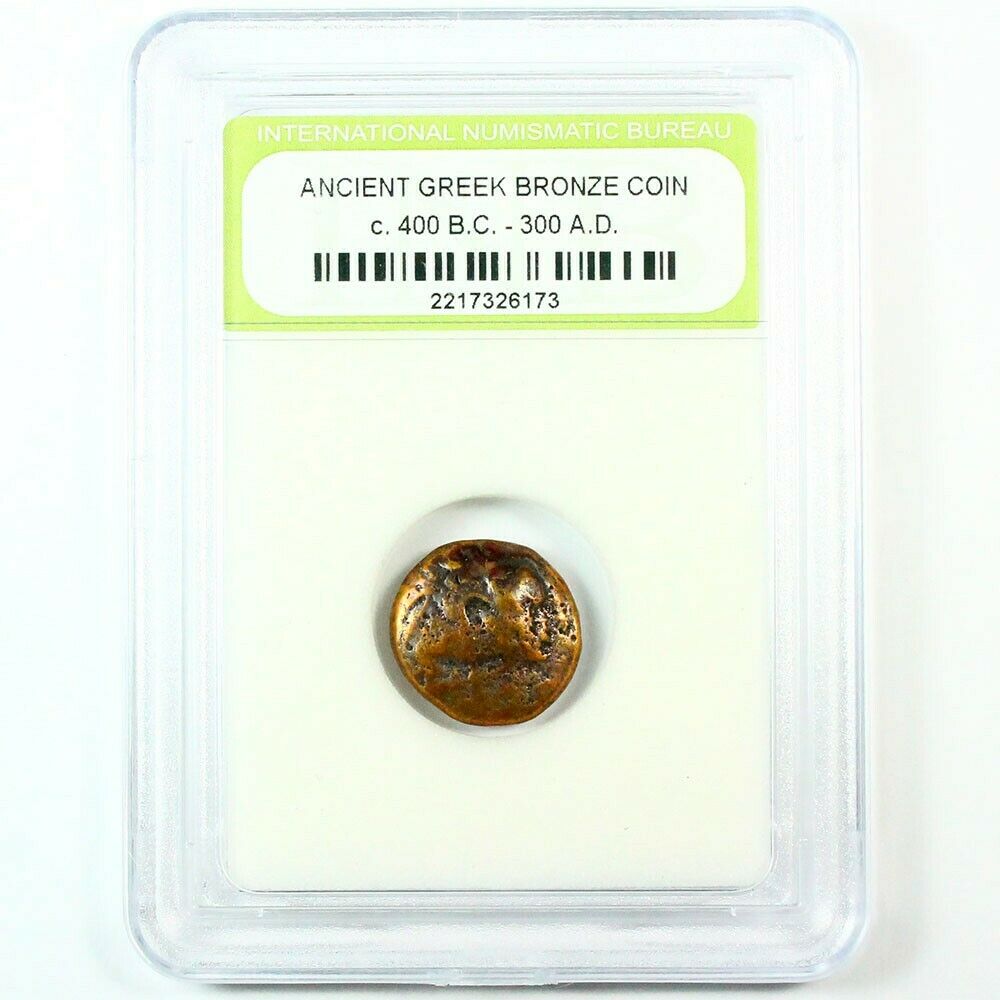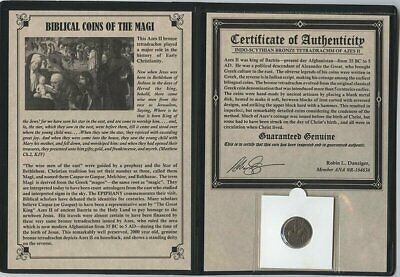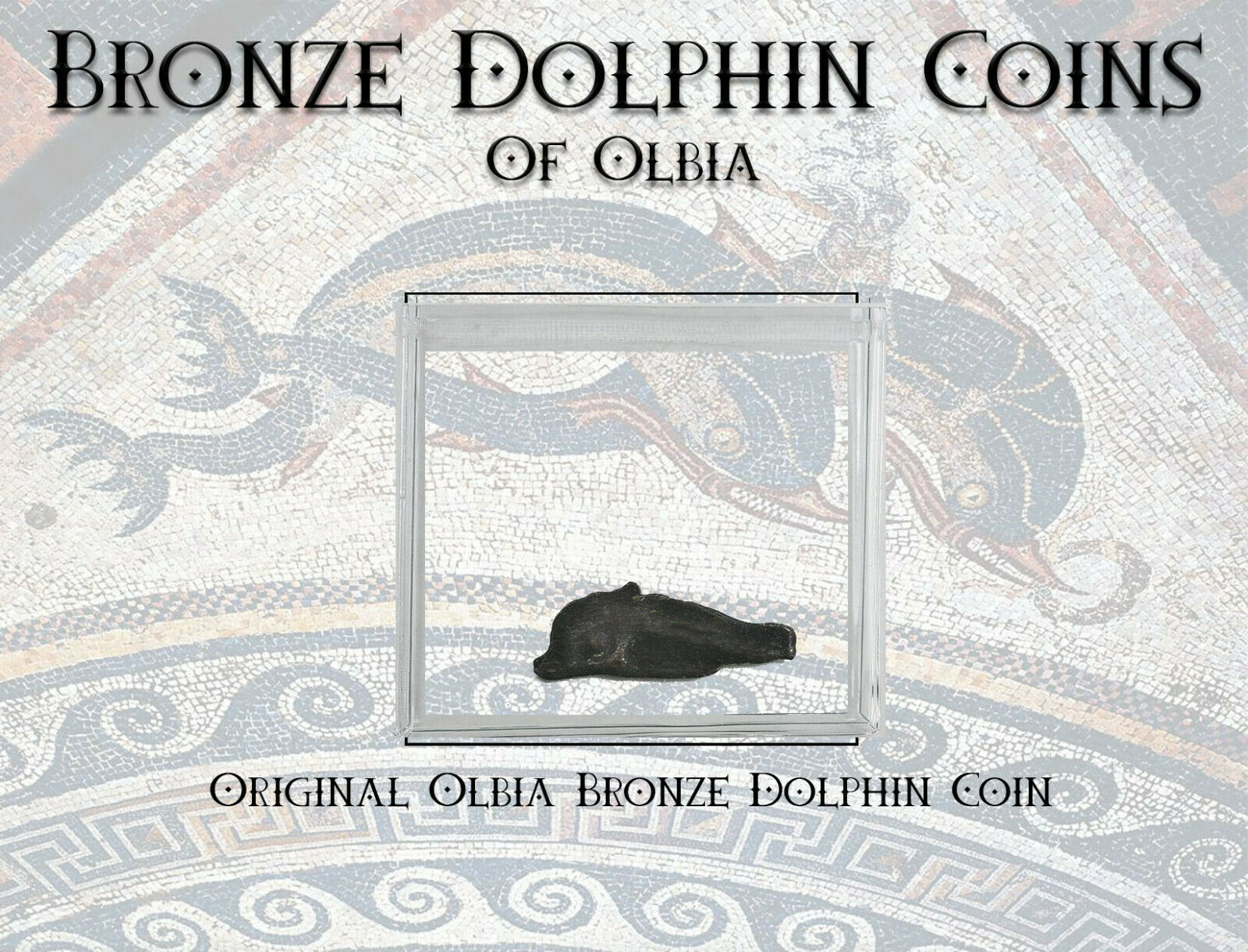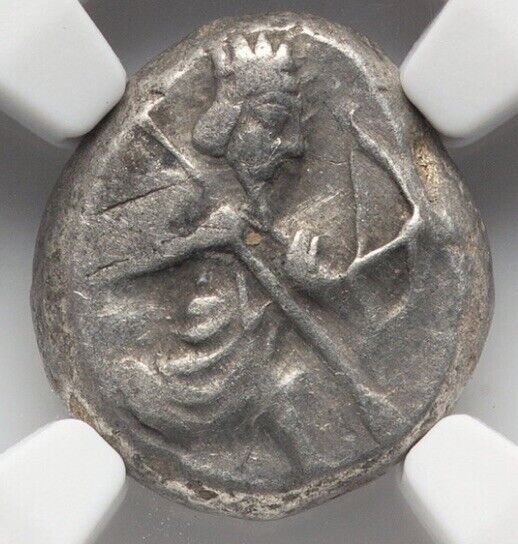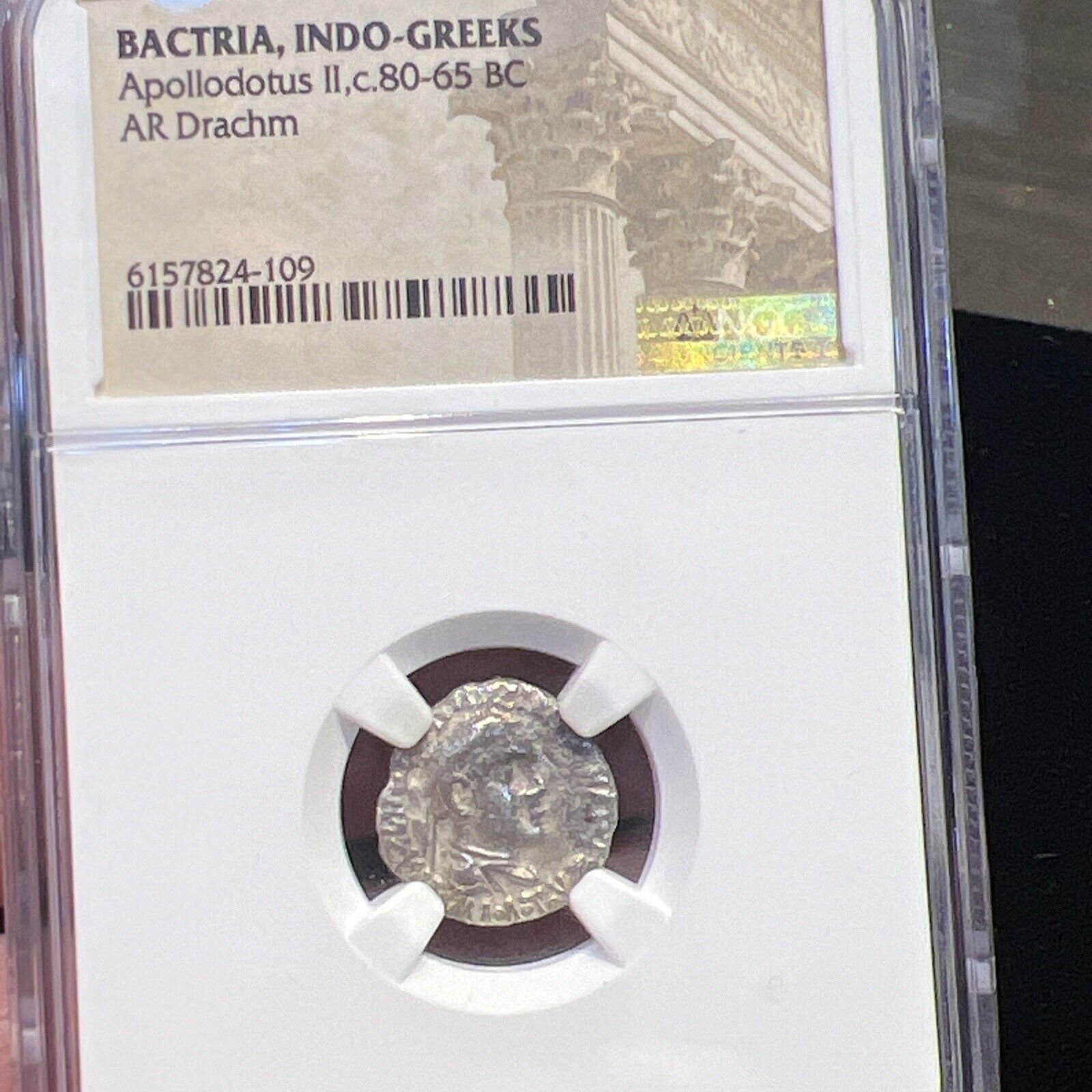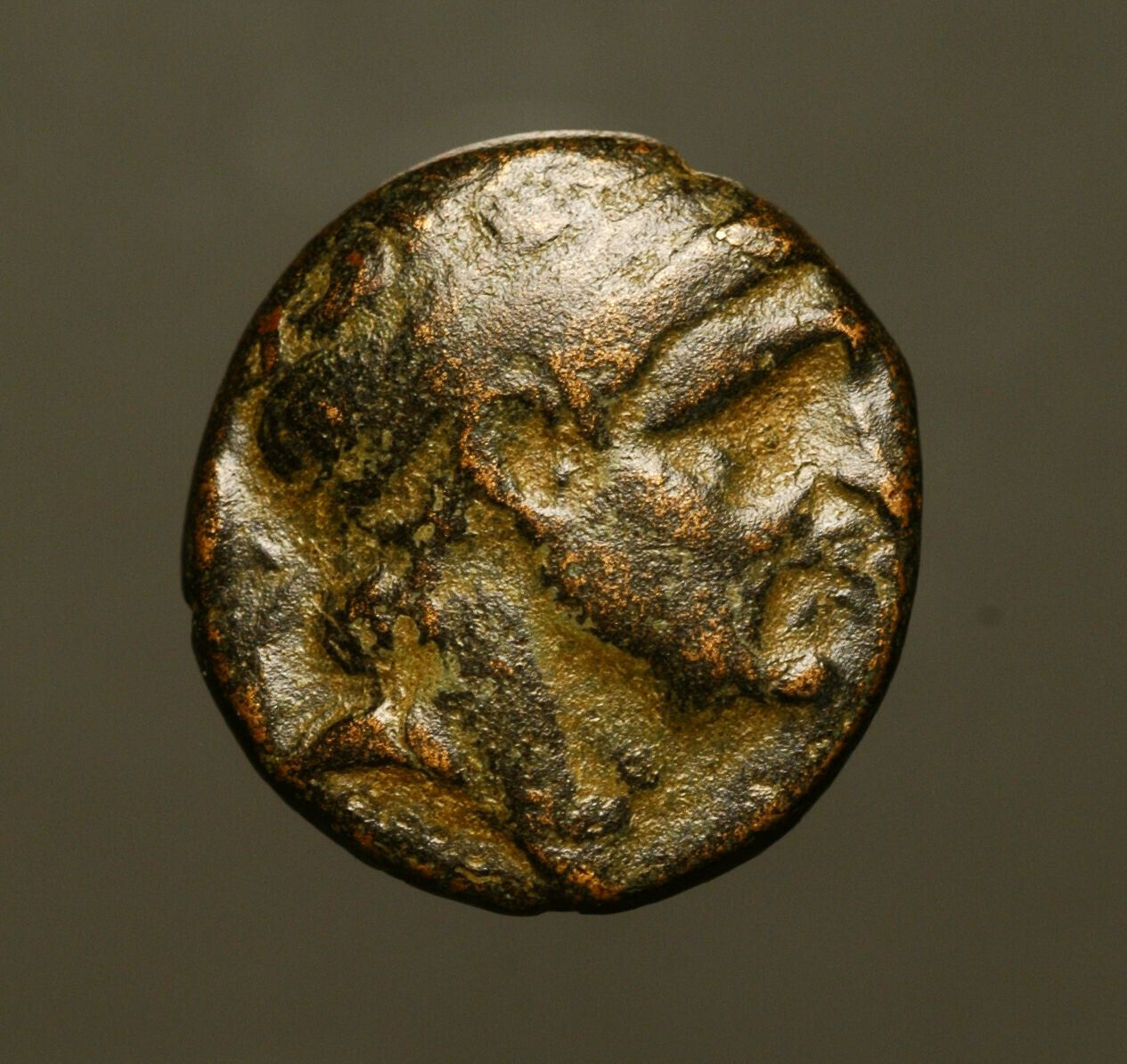-40%
EPHESUS IONIA AE17_____Bee & Stag______ONE OF THE 7 WONDERS OF THE ANCIENT WORLD
$ 19.53
- Description
- Size Guide
Description
20E12FRASCATIUS ANCIENTS
A BEAUTIFUL BRONZE COIN OF EPHESUS IONIA FROM 280 - 258 BC .
The city was famed for the Temple of Artemis (completed around 550 BC), one of the Seven Wonders of the Ancient World. (Many considered it to be the most impressive of the 7)
The bee and deer (both on the coin) are sacred symbols to Artemis, and Artemis was the patron goddess of Ephesus
In the Roman period, it was for many years the second largest city of the Roman Empire; ranking behind Rome, the empire's capital. Ephesus had a population of more than 250,000 in the 1st century BC, which also made it the second largest city in the world.
EX: ROD SELL COLLECTION, (NOBLE 85, 24 JULY 2007) LOT 3541
THE SIZE IS 16.8 MM AND 2.74 GRAMS.
Sear 4406
OBVERSE – Bee within wreath
REVERSE – Stag grazing right; quiver above
BEE SYMBOL
The Bee is important to the ancient city of Ephesus for a couple of reasons. First, the Bee was associated with Artemis, and since the Temple of Artemis was situated in Ephesus, the Bee was of great consequence as a symbol of the city. The priestesses in the Temple were even called Melissae (Honey bees).
Philostratos of Lemnos, a writer in the Roman period at about 190 AD, relates: When the Athenians set out to colonize Ionia, the Muses in the form of bees guided the fleet; for they rejoiced in Ionia, because the waters of Meles are sweeter than the waters of Cephisus and Olmeius. So the Ephesians and colonists of rival city Smyrna told the story that the Muses, in the form of Bees, led them to their homeland centuries before.
EPHESUS
Ephesus was an ancient Greek city, and later a major Roman city, on the west coast of Asia Minor, near present-day Selçuk, Izmir Province, Turkey. It was one of the twelve cities of the Ionian League during the Classical Greek era. In the Roman period, it was for many years the second largest city of the Roman Empire; ranking behind Rome, the empire's capital. Ephesus had a population of more than 250,000 in the 1st century BC, which also made it the second largest city in the world.
The city was famed for the Temple of Artemis (completed around 550 BC), one of the Seven Wonders of the Ancient World. The temple was destroyed in 401 AD by a mob led by St. John Chrysostom.
TEMPLE OF ARTEMIS
The Temple of Artemis was rebuilt on the ruins of an earlier Temple which had been destoyed by an arsonist seeking fame for himself ( a man named Herostratus) The new, larger Temple of Artemis is the one known as the Wonder of the World. The old temple was destroyed in 323 BC the year Alexander the Great was born, and it was rumored that Artemis allowed her temple to burn because she was distracted by the birth of the hero. Knowing this, Alexander himself offered to pay for the rebuilding of the Temple, but the Ephesians built it at their own expense. The new Temple stood for 600 years before being burned and looted by invading Goths in 268 AD.
Ephesus shared in a general revolt of 412 BC against Athens, siding with Sparta in the Second Peloponnesian War, and remained an effective ally of Sparta down to the end of the war. Threatened by Persia after 403, Ephesus served in 396 as the headquarters of King Agesilaus of Sparta. In 394 the Ephesians deserted to Conon’s anti-Spartan maritime league, but by 387 the city was again in Spartan hands and was handed by Antalcidas to Persia.
There followed the pro-Persian tyranny of Syrphax and his family, who were stoned to death in 333 on Alexander the Great’s taking the city. After 50 years of fluctuating fortune, Ephesus was conquered by the Macedonian general Lysimachus and resettled around Coressus and Pion (286–281 BC). Lysimachus introduced colonists from Lebedus and Colophon and renamed the city after his wife, Arsinoo—a name soon dropped.
After the defeat of Antiochus the Great, king of Syria, by the Romans in 189 BC, Ephesus was handed over by the conquerors to the king of Pergamum. Attalus III of Pergamum bequeathed Ephesus with the rest of his possessions to the Roman people (133 BC). Thenceforth, Ephesus remained subject to Rome.
A True Auction Environment –
Auctions start at $.99 with No Minimums and No Reserves.
FULL UNCONDITIONAL GUARANTEE OF AUTHENTICITY
If the buyer feels that the coin received is not as represented - just return the coin and the buyer will be fully reimbursed for the cost of the coin; the original shipping charge; and the cost to ship the coin back… No Questions Asked. If the buyer is not happy, please let me know, and I will do what I can to make it right.
NOTE: Frascatius is a life member (LM #6864) of the American Numismatic Association (ANA). Frascatius fully complies with the ANA Member Code of Ethics.
If you have any questions regarding this auction, please click on “Ask seller a question”.
I will be more than happy to provide you with a response.
VISIT MY EBAY STORE: FRASCATIUS ANCIENT COINS
For those new to ancient coins, please contact me, and I will e-mail to you my "Beginners Guide for Ancient Coin Collectors - FAQ".
SHIPPING:
To the U.S. = .00 Insured Flat Rate
International = .50 Insured Flat Rate
Multiple items may be grouped at no additional charge at the above rates.
All items will be carefully packaged, protected & insured (private insurance).
Powered by SixBit's eCommerce Solution
